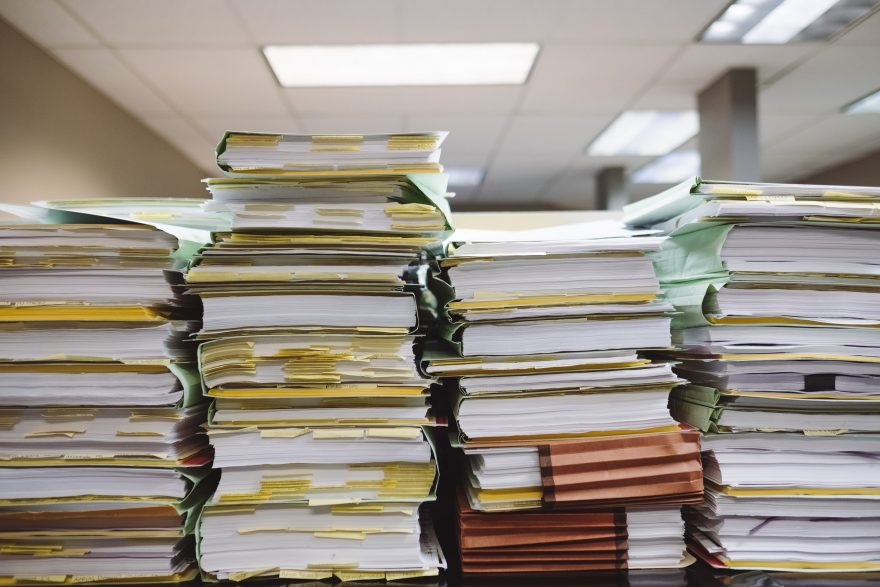Why do we all respond so differently?
There has been a lot of material over the last few months providing tips on working from home, you have probably already read some of them. Mostly the advice is practical, sensible, and heavily grounded in the tricks and techniques that many people who are already home workers are well versed in, but it misses the point. A lot of the people currently having to work from home are not the kind of people who would typically work from home. For some of us this ‘best practice’ might be useful and a healthy approach, but the assumption that there is a right way of doing things can be the very thing that is causing stress. I have worked from home on and off for most of my working career. I don’t do half the things that are being advised, they are just not me. However, I am no longer the only home worker in my house, and this has allowed me to see the areas where the right answer for each of us is very different.
To maintain the best mental health when working from home, the golden rule is ‘do what works for you’. If the suggestions help, then go for it, if they don’t, feel free to let them go. The thing is, we are all different and we all think, work and react differently. Trying to force your working style into the routine that someone else believes in the correct one will at best be hard work, but it could easily be chipping away at your resilience, mood and overall mental wellbeing. Regardless of how you work, you will always be more productive by being you than spending energy conforming to so-called ‘best practice’.
This is also something that we need to consider as managers. Recognising that the way we want to work will not be the best way for some of our team, so we need to decide if we are interested in getting the best out of people, or making them conform. This will mean letting go of some of the beliefs that you may hold about work. For instance, does it matter if a member of your team starts early in the morning, but takes an extended lunch break just to get out of the house for a while? There are two questions I find myself asking; “is the work getting done?” and “are the team OK?”. The priority as a manager is to find a balance between these two, which means that if getting the work done requires more flexibility in working style to maintain the team wellbeing, then that is something I need to promote and support.
One of the ways that psychologists think about how we are different is by using the model known as the big five personality traits. It offers an interesting way to think about the range of individual differences, and how we will each be impacted differently as we settle in to working from home. These are explored below.
Openness to experience – Some of us are very open to new things and will see working from home as a bit of an adventure. If you are working with someone with a high in openness to experience you can expect them to be finding new ways that you can work together; this might come across as a stream of websites, software or tools that they want to try with the team. In moderation this can be really useful as they will find solutions to the challenges of working in a different way. However, you may need to slow them down, as those who are much lower on the openness scale will find the volume of change created by home-working challenging enough without these additional new ideas.
Conscientiousness – Some people like the world to be formalised and ordered, others like the world to be flexible and spontaneous. For those who are high in conscientiousness, the moving of deadlines and changes in targets that might be necessary to facilitate home working will need to be carefully communicated, and if possible locked down quickly, while those low in conscientiousness will look to keep things more open, creating as much flexibility as possible, just in case things change even more. The key will be to find a balance between creating a new routine, yet not locking things down so tightly that your team cannot respond as the world changes around us. One of the classic bits of advice often given to home workers is always dress smartly for work. If you are high in conscientiousness you might find this really helpful, formalising the work part of the day, if you are low (like me) then remember nobody needs to know you are wearing shorts on a video conference – although do wear something, just in case you have to stand up to fetch something!
Extraversion – So, you don’t need to study psychology to work out that some people in the team are loud and outgoing while others are much more quiet and reserved. The extraversion scale is looking at this difference in how we relate to the world, with extraverts looking to the outside world for their energy, while introverts look inside themself to recharge. Homeworking can be really draining for extraverts, who are not getting the ‘fix’ of people to ‘top-up’ the batteries. Even video calls are going to be like a slow charger compared to what they are used to. This can cause the extraverts to become drained very quickly when working on challenging things as they cannot recharge quickly. Introverts need time and space to recharge. It is not that they don’t like spending time with people, just the time needs to be more intimate, and they prefer group sizes to be smaller. While homeworking might suit introverts as they are being left alone to get on with their work, there is a risk here too. Some introverts will so enjoy the working style that they withdraw too far from the group, not really joining in with group calls, or working on other things when the conversation seems like banter. They can easily find themselves left behind by the rest of the team as the world rapidly changes.
Agreeableness – Agreeableness is a measure of your preference for social harmony, people who are high in agreeableness like it when people are getting along, whereas those who are low on this scale will place their own self-interest over that of the group. Having to communicate by video call makes it much harder than usual to have difficult conversations, without them becoming arguments. If you are highly agreeable, this may be causing you to maintain social cohesion at your own expense, which may generate some resentfulness and frustration. Low agreeableness might cause you not to see where you need to concede to allow the group to move forward, damaging working relationships unnecessarily. Watch out for situations where you push forward too quickly in the desire to get things done, when others just needed a little more time to get their heads around it.
Neuroticism – Some people are more emotionally stable than others. While everyone will react emotionally to things that happen, some of us process these events much more negatively, and this is what the neuroticism personality measure is looking at. People who are high in neuroticism may find that they are unsettled at the moment, worrying about the future, their security or their family. They may take work things more personally than they used to, and the lack of interaction with the team may mean that it takes a lot longer for misunderstandings to get resolved. This may also play out in other areas of their life, so lockdown frustrations at home may spill over into work, and work into home, particularly as the boundaries between these is so blurred. People who are low in neuroticism are probably less concerned about what is happening, which may also mean they are less stressed, which is good. That said, while worrying all the time is a bad thing, small amounts of anxiety can be a great warning signal that we need to focus on an upcoming threat, which means that low neuroticism may cause people to be complacent during times of rapid change, like now.
Of course, these personality traits are not simple binary choices, they are spectrums, and very few of us sit at either end of the spectrum, most are somewhere in the middle. The key is recognising that we are all slightly different, and therefore need to find a balance that works for us in new situations (such as remote working). If you are in the position that many of us right now find ourselves in, finding it difficult to separate out work and home life as the boundaries blur into one, then think about your personality and what you need to do to make it work for you. This might be breaking up your schedule from the usual work 9-5, or creating better work and home boundaries, such as designating a space for work, or dressing for work and then getting changed at the end of the day. Mostly though, accept that right now things are different, and you probably won’t get it entirely right all of the time. Be kind to yourself, and those that you work with, as we all try to find a balance for this new way of working. It would also be nice if our acceptance of each other’s different styles became part of the new normal.
Photo by Dillon Shook on Unsplash









